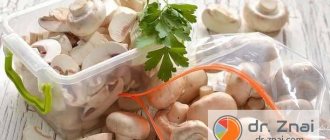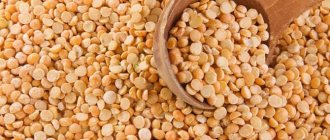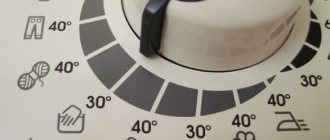A special situation has arisen. And you urgently need ice for some purpose. Water freezes at 0 degrees. At first glance, the question itself will seem stupid. After all, what other solution to this problem could there be if not: take a container of water and put it in the freezer. There is one thing. Water will take a very long time to freeze due to its specific heat capacity. And you will have to wait a very long time for the ice you need.
We all know from our school curriculum that water freezes at a temperature of 0 degrees Celsius. What could be easier than getting ice? It is enough to put water in the freezer and after a while take out the resulting ice. But the water takes a long time to cool down and the process may drag on. Let's consider the question of how to quickly freeze water?
The speed at which water freezes depends on two factors. The first is the surface area of the container into which water is poured, and the second is the thickness of the water layer. The smaller the area and the greater the thickness of the layer, the longer it takes for the water to freeze and ice to form. And, naturally, vice versa. This means, as you understand, you need to pour water into a shallow and wide bowl. For these purposes, so-called plastic containers for obtaining ice at home are suitable. Pour water into such a container and place it in the freezer. Ice forms much faster than if you put water in a plastic jar or glass.
The process of freezing water can be somewhat speeded up if you use regular table salt. You need to pour water into an ice container and put it in the freezer. When the water begins to freeze, throw 1-2 grains of salt into each cell or compartment of the container, and almost fresh water will freeze faster, despite the fact that salt water takes longer to freeze. It's strange, but it's true. Salt crystals will serve as the so-called beginning of water crystallization, while the mass of salt will be insignificant.
You can freeze water and make ice using liquid nitrogen. If you have a Dewar flask, then the process will also not be difficult and fast. A long metal container, such as a test tube, must be filled with water and lowered into a vessel with liquid nitrogen. Be sure to use tongs or a clamp. Care must be taken to ensure that nitrogen does not completely fill the container. After a few minutes, remove the container from the vessel, and as soon as the walls begin to heat up, the ice can be easily removed.
Chemicals can be used to make ice quickly. Some of them absorb large amounts of heat when dissolved. Ammonium nitrate, or ammonium nitrate, is one such chemical used in agriculture. If you need ice for purposes other than food, there is no simpler way to do it. Dissolve the saltpeter in a container of water, making sure to stir, and place it in the freezer. After a few minutes, the finished ice can be removed from the freezer.
Physical properties of water when frozen in the freezer
The rate at which water freezes is determined by the heat transfer surface area and the thickness of the water layer. The wider the layer, the longer the water will freeze, and vice versa.
Pour water into a container that has a large area, pour it so that the thickness of the water layer remains small.
Methods for making ice in the freezer
There are glaciers for such purposes. These are small plastic containers that are designed to make edible ice at home without much effort. You just need to put this container in the freezer. Water turns into ice much faster than if you used a glass.
How else can you speed up the process? There are some secrets. When the water temperature is not far from zero degrees, simply throw a couple of grains of table salt into a container of water. Some people may not believe the meaning of this action, because in theory, salt water takes longer to freeze than fresh water. But don’t rush to get upset and not believe! This paradox will only seem to you. In fact, you throw in a small amount of salt, so the water remains fresh. A few grains will simply help the crystallization process.
Next secret. You will need a long thin metal test tube. Fill with water, lower this test tube into the Dewar flask using a clamp or wire. Do not lower it completely, but so that liquid nitrogen does not flood. After a little time, take it out. When the walls of the container are heated, the ice will be ready and easy to remove.
How to make crushed ice
7. Place the cubes obtained in the previous step into a durable plastic bag. Gently crush the ice to the desired size of crystals with a wooden mallet or any other blunt kitchen utensil, such as a rolling pin. Strike smoothly and not very hard, trying not to tear the bag.
Attention! Before crushing, protect your eyes and face from individual pieces of ice. An alternative option is to grind the cubes in a food processor or blender, setting the pulsation mode
An alternative is to grind the cubes in a food processor or blender on the pulsing setting.
It is very easy to get injured when crushing by hand!
Secrets to getting ice quickly
And the last secret for lovers of various chemical processes. There is a substance called ammonium nitrate or ammonium nitrate. The properties of this chemical dissolve, absorbing almost all the heat. This substance, by the way, is often used as a nitrogen fertilizer in agriculture.
If you need ice for non-food purposes, add ammonium nitrate to a container of water and mix everything. Then place the container in the freezer. In a couple of minutes the ice will be ready.
At what temperature does water freeze in the freezer?
It would seem that the answer is obvious. Zero. Someone will remember that sea water freezes at minus three to four degrees below zero Celsius. Because seawater contains salts and minerals that shift the freezing point. Also, you probably already know that NASA space agency scientists have published a report about the water found on Mars, which does not freeze at a planetary temperature as low as minus 25 degrees below zero Celsius. Of course, this substance is called water very arbitrarily, since the chemical composition in this liquid can kill anyone. That is, it is obvious that the freezing temperature depends on the composition of the water: the more foreign molecules contained in H2O, the less susceptible the water is to the crystallization process at low temperatures.
However, the following scientist turns everything on its head - it turns out that if you try to freeze perfectly clean water, without impurities, and most importantly - without dust particles (even microscopic), then such water can only freeze at minus 43 degrees Celsius! This phenomenon is explained by the fact that ice crystals have nothing to “catch onto” - there is no center of crystallization.
And that is not all! Water can be cooled to low temperatures (a couple of tens of degrees below zero Celsius) bypassing the crystallization stage in its classical form. This effect is known as “hypothermia.” This effect is achieved in cases where the purified water is at rest and very carefully placed in the freezer for a couple of hours. But as soon as you take out such water and jog a little (or even click your finger on the bottle), the water will instantly turn into ice (even though it sounds like science fiction).
Well, and finally, another interesting fact about water freezing: hot water freezes faster than cold water. There is no exact scientific basis for this effect today (although it was proven in 1963), most likely this is due to the fact that water molecules that evaporate from a hot liquid undergo instant freezing (as a less dense substance than water itself) and form primary centers of crystallization and further cooling of all remaining liquid.
Usage[edit | edit code]
Speed traveledit | edit code
Due to the slippery properties of ice, it can be used to change the mechanics of entity movement, including the movement of objects.
If you create a flow of water on the surface of ice, then objects will move with the flow much faster.
If you build a tunnel 2 blocks high and 1 block wide with ice on the base, and then run through it, often pressing the jump key, you can easily reach a speed of 15-20 blocks/s, which is twice as fast as the maximum speed trolleys. It should be noted that with this method of movement, the hunger scale is quickly spent.
Players on a boat can move quickly across the ice, reaching speeds of up to ~40 blocks/s, but turning is difficult due to sliding. This property can be used to build a high-speed “ice” metro to quickly move the player between remote points of the game world, in addition, ice does not melt in the Lower World in the absence of nearby bright lighting sources, so you can lay an ice route with a network of portals there, speeding up movement even more 8 times in projection onto the upper world.
Transportation of wateredit | edit code
Since ice can be stacked into 64-piece stacks, unlike water buckets, it can be used to transport water sources in a space-saving manner.
Step-by-step instructions for freezing water in the freezer
The rate of freezing of water depends, firstly, on the heat exchange surface area, and secondly, on the thickness of the water layer: the thicker it is, the slower the entire volume of water will freeze (and vice versa). Therefore, pour water into containers such that the cooling surface is large enough and the thickness of the water layer is small. You can use, for example, ice cubes - plastic trays with small and shallow containers that are produced specifically for this purpose - making edible ice at home. Place this container of water in the freezer. Ice forms much faster than if exactly the same amount of water were poured into a plastic glass, for example.
In addition, you can speed up the freezing of water as follows. When its temperature is already close to 0, throw one or two grains of table salt into each container. It would seem like a paradox, since it is known that salt water freezes at a lower temperature than fresh water. But this paradox is only apparent: the mass of salt will be so insignificant that the water will actually remain fresh, and the grains will serve as a kind of initiator of crystallization.
If you have a long, thin test tube type container (metal only), you can make ice very quickly using liquid nitrogen. Lower this container of water (using a long clamp or wire) into the Dewar flask, of course, not completely, so that the liquid nitrogen does not flood it. After a while, take it out. As soon as the walls of the container heat up, the ice can be easily removed. The ability of some chemicals to dissolve, absorbing large amounts of heat, can be used to quickly freeze water. For example, there is such a substance - ammonium nitrate (ammonium nitrate). It is widely used in agriculture as a nitrogen fertilizer. If the ice you want is for non-food purposes, add ammonium nitrate directly to a container of cooled water and dissolve while stirring. Then put the container back in the freezer. Ice forms within minutes.
History[edit | edit code]
| Alpha Java Edition | ||
| 1.0.4 | Ice added. | |
| Official release of Java Edition | ||
| 1.0.0 | Beta 1.9 Prerelease 2 | Ice can be mined with a pickaxe enchanted with Silk Touch and brought to the Nether as a source of water. |
| Beta 1.9 Prerelease 3 | Ice can no longer be mined with a pickaxe enchanted with Silk Touch. | |
| 1.3.1 | 12w17a | The ability to mine ice with a pickaxe enchanted with Silk Touch has been returned, but the ability to create a spring in the Nether using ice has been removed. |
| 1.7.2 | 13w41a | Ice, water and portals are now visible when looking at them through each other. |
| 13w42a | An error that causes water to be invisible when viewed through ice. | |
| 13w42b | The water is again visible through the ice. | |
| 1.13 | 1.13-pre2 | Exclusive to Java Edition: Nine ice blocks can now be crafted into dense ice. |
| 0.8.0 | Ice has been added to the Creative mode inventory | |
| Official release of Bedrock Edition | ||
| 1.2 | beta 1.2.0.2 | The ice is now completely transparent. |
| Legacy Console Edition | ||
| Ice added. | ||
| The ability to mine ice with a pickaxe enchanted with Silk Touch has been returned, but the ability to create a water source using ice has been removed. | ||
| New Nintendo 3DS Edition | ||
| 0.1.0 | Ice added. |
Mpemba effect when freezing water in the freezer
Mpemba effect
(Mpemba's Paradox) is a paradox that states that hot water under some conditions freezes faster than cold water, although it must pass the temperature of cold water during the freezing process. This paradox is an experimental fact that contradicts the usual ideas, according to which, under the same conditions, a more heated body takes more time to cool to a certain temperature than a less heated body to cool to the same temperature.
This phenomenon was noticed at one time by Aristotle, Francis Bacon and Rene Descartes, but it was only in 1963 that Tanzanian schoolboy Erasto Mpemba discovered that a hot ice cream mixture freezes faster than a cold one.
As a student at Magambi High School in Tanzania, Erasto Mpemba did practical work as a cook. He needed to make homemade ice cream - boil milk, dissolve sugar in it, cool it to room temperature, and then put it in the refrigerator to freeze. Apparently, Mpemba was not a particularly diligent student and delayed completing the first part of the task. Fearing that he would not make it by the end of the lesson, he put still hot milk in the refrigerator. To his surprise, it froze even earlier than the milk of his comrades, prepared according to the given technology.
After this, Mpemba experimented not only with milk, but also with ordinary water. In any case, already as a student at Mkwava Secondary School, he asked Professor Dennis Osborne from the University College in Dar Es Salaam (invited by the school director to give a lecture on physics to the students) specifically about water: “If you take two identical containers with equal volumes of water so that in one of them the water has a temperature of 35°C, and in the other - 100°C, and put them in the freezer, then in the second the water will freeze faster. Why?" Osborne became interested in this issue and soon, in 1969, he and Mpemba published the results of their experiments in the journal Physics Education. Since then, the effect they discovered has been called the Mpemba effect.
.
Until now, no one knows exactly how to explain this strange effect. Scientists do not have a single version, although there are many. It's all about the difference in the properties of hot and cold water, but it is not yet clear which properties play a role in this case: the difference in supercooling, evaporation, ice formation, convection, or the effect of liquefied gases on water at different temperatures.
The paradox of the Mpemba effect is that the time during which a body cools down to the ambient temperature should be proportional to the temperature difference between this body and the environment. This law was established by Newton and has since been confirmed many times in practice. In this effect, water with a temperature of 100°C cools to a temperature of 0°C faster than the same amount of water with a temperature of 35°C.
Article information
wikiHow works like a wiki, which means that many of our articles are written by multiple authors.
This article was produced by 17 people, including anonymously, to edit and improve it. Category: Cooking Basics
In other languages:
English: Make Clear Ice, Deutsch: Klare Eiswürfel Machen, Italiano: Fare Il Ghiaccio Trasparente, Español: Hacer Cubos de Hielo Cristalinos, Portugu late Anti -français: Faire des Glaçons Transparents, 中文: 制净 透 冰块 冰块 冰块 冰块 冰块 冰块 冰块 冰块 冰块, Bahasa Indonesia: Membuat Es Batu yang Bening, Nederlands: Doorzichtig ijs maken, Čeština: Jak vyrobit čirý led, العربية: صنع ثلج شفاف, ไทย: ทำน้ ำแข็งให้ใส, Tiếng Việt: Làm đá viên trong suốt, 日本語: 透明な氷を作る, 한국어: 투명한 얼음 만드는 방법, हिन्दी: साफ, सफेद और पारद Make Clear Ice
This page has been viewed 88,482 times.
Was this article helpful?
Not really
How to store dry ice and how to work with it
At home, ice is stored in a special container or cooler bag. If it's cold outside, the container can be placed outside the window.
- Do not store in an airtight container, freezer or poorly ventilated area. In the first case, an explosion may occur, and in the second, the room will be filled with carbon dioxide and it will be difficult to breathe in it. When conducting experiments at home, be sure to ventilate the “laboratory” well.
- When working with solid carbon dioxide, we recommend wearing gloves and long sleeves. Prolonged contact with ice flakes can result in burns. Because of this, you should not trust his children - all classes are conducted strictly under the guidance of an adult.
- The substance should not be held with bare hands for a long time and tasted. Moreover, the steam generated from it is completely safe.
Why does ice form on the freezer door?
It happens that the alarm indicates a violation of the regime in the freezer - the door is not closed tightly or the seal has come off. Ice freezing is accelerating. Now it is loose, reminiscent of snow, wraps the lids of containers, and settles on the door. The cold passes through such a fur coat with difficulty, the compressor runs non-stop.
The reason for the accelerated freezing of ice in the freezer is the continuous supply of fresh air. The warm agent contains a lot of equilibrium moisture, which precipitates on cold surfaces. But frost frozen on the door widens the existing gap, increasing icing. A warm refrigerant circuit runs around the doorway in the foamed part. The ice melts, leaks under the bottom drawer, and ice forms on the bottom of the freezer.
If the freezer is electronically controlled, the regulator will stop distributing cold into the open circuit and the food will begin to thaw.
How to make crushed ice
7. Place the cubes obtained in the previous step into a durable plastic bag. Gently crush the ice to the desired size of crystals with a wooden mallet or any other blunt kitchen utensil, such as a rolling pin. Strike smoothly and not very hard, trying not to tear the bag.
Attention! Before crushing, protect your eyes and face from individual pieces of ice. An alternative option is to grind the cubes in a food processor or blender, setting the pulsation mode
Popular articles SMS congratulations on March 8th. International Women's Day
An alternative is to grind the cubes in a food processor or blender on the pulsing setting.
It is very easy to get injured when crushing by hand!
Delicious ice
Using ice you can change not only the temperature, but also the appearance and taste of the cocktail:
- Add aromatic herbs to the ice figures; they will decorate it and give it a spicy original taste. The most suitable options are mint, thyme, lemon balm, and basil. Be sure to consider the compatibility of the drink and herbal supplements. Instead of herbs, you can freeze tiny edible flowers - small buds of roses, violets, nasturtiums.
- Freeze berries (after removing the seeds), fruit slices, olives, citrus slices, melon or watermelon slices. Fill the mold to about a third of the volume and freeze. Place a slice of product and fill with water. An unusual cocktail can be served by placing pieces of nuts in ice cubes.
- Use juices, lemonade, fruit drinks, liqueur. This will enrich the taste of the cocktail and make its color brighter. The main thing is not to forget about the compatibility of tastes.
- Add crushed chocolate or shavings to ice; you can freeze the finished chocolate drink.
- Take food coloring and flavoring. Multilayer ice cubes look especially interesting. Pour some water into the mold, add flavoring and coloring, and freeze. Pour in a little more water, add another flavoring and coloring, freeze, etc. These cubes are an excellent decoration for cocktails.
Experiments with dry ice for children from three years old
- Inflating a balloon (3+)
Place some ice inside a regular balloon and tie a tail. Then the magic will happen on its own. The carbon dioxide will sublimate and miraculously inflate the balloon. The main thing is not to overdo it with the amount of substance, otherwise the ball will not withstand it and will burst. Although the explosion may well be part of the trick.
- Giant bubble (4+)
Place a block of dry ice weighing 500–700 grams at the bottom of the dish and fill it with hot water. The reaction will happen instantly - white steam will pour out of the dish.
Now we need to act quickly. Soak a piece of cloth or rope in the soapy solution and pass from one edge of the dish to the other over the steam so that a soap film forms. After a few seconds, the substance will turn into gas, stretch the soap film and a huge bubble will grow above the plate, similar to a magic fortune ball.
- Putting out the candle (5+)
This is an experiment for children that is more educational than spectacular. Place a candle inside a vase or jar and light it. The candle will burn evenly and easily. Throw a few pieces of CO2 into the jar and after a short time the fire will go out because the carbon dioxide does not burn.
- Magic smoke (4+)
Pieces or granules of solid carbon dioxide are simply thrown into a bowl of hot water. The container turns into a mystical witch's cauldron.
The secret of the trick is simple: when it gets into hot water, carbon dioxide goes from a solid state to a gaseous state much faster. Interestingly, it does not have a liquid state. With older children, you can delve deeper into physics and consider the topic “The Three States of Matter.”
- Floating bubbles (3+)
Soap bubbles appear alive if you blow them into a container with a few pieces of CO2. The released gas prevents the bubbles from falling, and they beautifully float in the air above the ice crystals.
- Smoke balls (5+)
A hole is cut or burned in the bottom of the plastic bottle of such a size that a rubber tube or plastic straw fits tightly into it. Insert the tube into the hole. Place some dry ice in the bottle and close the cap tightly. Dip the end of the tube into the soapy solution and watch the steam-filled bubbles inflate.
The gas stretches the soap film at the end of the straw and blows out the bubbles. Try “planting” such a bubble on a child’s hair or a woolen mitten.
You may come up with other interesting tricks with dry ice: you can use it to make soda, freeze plants with it, and use it in smoky discos. The ideas are endless!
You might find free lessons on how to develop a child at home useful.
Read on topic:
Theory
Homemade ice turns cloudy due to gases (including oxygen), mineral salts and other impurities contained in the water. The gases form tiny bubbles that, when frozen, form crystals that are too large. Heavy metal salts act in a similar way. Only purified, degassed water of low hardness provides complete transparency.
The difference between conventional freezing and the proposed technology
Ingredient:
water (purified or distilled) – 1 liter.
Depending on the number and variety of drinks, an average of 600-800 grams of ice is required per party participant.
Don't avoid fats
Yes, yes, you read that right. You should not avoid fats if you want to make truly delicious, tender and soft ice cream. Inevitably you will have to choose products with maximum fat content. If you are categorically not satisfied with this arrangement, then prepare fruit ice or sorbets. For this ice cream you only need juice from fruits or berries.
Add syrups before freezing
As you know, any ice cream tastes better if you prepare it with various additives. Among them, syrups with all sorts of flavors are very popular. Chocolate, caramel, pistachio, coconut, strawberry - this is just an incomplete list of popular syrups from which you can make delicious ice cream. It is important to remember that syrups are added to milk or cream mixtures before freezing.
Description[edit | edit code]
Like ice, it can only be mined using a pickaxe with the Silk Touch enchantment, and when walked on it creates a sliding effect. But it is opaque, does not form from water (thus it is not a renewable block like normal ice), does not create a source of water when destroyed, does not melt from light sources (like blue ice) and can be set on fire by flint
It may be useful for those who use normal ice but are wary of light sources. If you put a slab on it, the player will slide in the same way as on regular ice.
On blocks of dense ice, unlike regular ice, mobs can spawn, which allows it to be used in the construction of automatic mob farms.
Why does ice form?
One of the likely causes of ice may be a power outage. The mains voltage has gone out, so the refrigerator does not freeze. As a result of downtime, a puddle may appear; the fact that it appears is not always clearly visible and may go unnoticed. After operation is restored, it freezes and ice forms.
Setting the maximum freezing mode can lead to untidy consequences. When you open the door, frost forms, which begins to melt and drip down, resulting in the formation of ice.
To avoid this, it is recommended to keep the freezing temperature at medium. This will not only prevent the occurrence of frost, but will also save some energy. According to the recommendations of most manufacturers. This mode of operation is the most optimal.
Naturally, opening and closing the door is not the only circumstance leading to the occurrence of icing. The reasons for this phenomenon may include the following:
- Broken door seal. Wear of the rubber seal may result in the door not fitting tightly to the refrigerator body.
- Another reason why ice forms in a refrigerator with the NoFrost system may be clogging of the channels leading water from the heat exchanger with foreign inclusions. Also, one of the pipes could simply have jumped out, as a result of which moisture does not enter it and the movement of water to the container for collecting moisture does not occur.
The container itself is usually located in the same compartment with the motor. Water evaporates from it naturally. The occurrence of icing may be due to the fact that the resulting water does not get to the required place, but is poured into the freezer. There it freezes safely.
- Malfunction of the heating element of the heat exchanger, that is, its combustion. In this case, no one except a service specialist can help.
Important! If the appearance of ice is observed regularly, and the refrigerator is still under warranty, then you should not look for reasons. Moreover, carry out independent repairs. Contact the seller to fix the problem or replace the technical device.
Why does ice form under the drawers in the freezer?
The manual defrosting chamber is a cabinet with a double body, foamed with polyurethane. The inner chamber has structures made like stands for boxes or trays made of thin aluminum sheet. Evaporator tubes are connected to each shelf below.
Products are placed in drawers or behind doors. During freezing, water is released and settles on the tubes, which is why ice freezes under the drawers in the freezer. Therefore, it is dangerous to allow a large layer - it is difficult to remove products, and you can accidentally damage the tube.
Ice formation in the freezer compartment under the shelves is a natural physical process. But ice is an insulator and impairs heat transfer. The larger the snow build-up in the chamber, the longer the compressor cycle, and the more energy is spent on freezing food.
Ice at the bottom of the No Frost freezer
If the freezer uses a convective method of transferring cold from the evaporator to the food, there should be no frost inside. The evaporator is located behind the panel in the cooling compartment, there is also a fan, a defrosting heating element and a hole for removing condensate from the circuit.
What happens is that the hole becomes clogged, the drainage hose freezes, sticks together, and water accumulates in the chamber with the evaporator, freezes in a lump, seeps into the working chamber, forming ice in the freezer. Soon, No Frost will become inoperable due to accumulated ice and a frozen fan. Sometimes the drops from behind the panel take a long time to roll down, and blocks of ice freeze directly in the trays in the freezer.
If the panels are cold, a thin layer of ice will freeze on the walls of the No Frost freezer. Gradually it will melt and drip onto the tray. What to do if ice freezes in the box? Turn off the refrigerator or freezer compressor, defrost the system and look for a malfunction.
Correct form
You can quickly freeze water if you choose the appropriate forms for this. The smaller the size of the finished cube, the faster it will form. In addition, thin and elongated rectangles and unusual complex shapes freeze faster. The fact is that the water will have a large contact area with the directly cooled surface. As a result, the ice will not only require less time to prepare, but will also be more transparent and less cloudy. It is not difficult to find similar forms on sale. With their help you can get ice hearts and stars that children will definitely like.
Freezing will take place quickly if you use special disposable or reusable bags. You can fill them with water through a special valve. The form itself will fit even in a crowded freezer, since it is not rigid, but flexible. The walls of the bag are much thinner, they conduct heat better. They are completely adjacent to the surface of the shelf, which also speeds up the process. The cubes themselves will be small.
This size is good for soft drinks or cocktails, but not for noble and complex drinks. In a small glass, a little ice will instantly melt, diluting the original product.
Ice forms in the freezer compartment of a Samsung refrigerator
Many users of modern double-chamber Samsung refrigerators complain on forums that with No Frost they often have to defrost the refrigerator. The evaporator constantly freezes and the fan stops. First, the water drains downwards, which is why ice forms at the bottom of the No Frost freezer. Then the defrost continues to work, but ice accumulates below, covering the evaporator. The reason for the formation of ice in the Samsung freezer is known to experts.
The air labyrinths behind the panels completely freeze. It is necessary to defrost the device for 2 days and start it again. If it doesn’t help, defrost it again and clean the drainage behind the panel. At the same time, you need to make sure that the drain hole is located above the condensate tray and that the hose is not stuck together. Freezing of the drainage tube is the main reason for the appearance of ice in the freezer compartment of a Samsung refrigerator.
crio.pro
Where to get solid CO2
The easiest option is to order ready-made kits for experiments with dry ice. In addition, there are many companies that manufacture and sell the substance. The same companies offer containers for its delivery. A container is necessary because without it the crystals will melt or, more correctly, sublimate. The warmer the transport and storage conditions, the more CO2 will evaporate.
You should not buy solid carbon dioxide in reserve. Buy it as close as possible to the time you need it. If the company offers a large batch (this is usually the case), try dividing it among several people: maybe your friends with children also want to experiment with ice. If there is no special company in the city, try to buy some of the substance from animators who make soap bubbles or a science show.
One kilogram costs about 90 rubles. The cost of a container for transportation and storage is from 500 rubles. One experiment will require from 30 to 500 grams of the substance.
Solid CO2 comes in lumps, cubes and granules. Carefully study the description of the experiments and decide which form is more convenient for you.
Receipt[edit | edit code]
Dense ice can be mined with any tool with the Silk Touch enchantment. When destroyed by something else, nothing falls out of the block.
Destructionedit | edit code
| Block | Dense ice |
| Strength | 0.5 |
| Tool | |
| Time of destruction | |
| Hand | 0.75 |
| Wooden | 0.4 |
| Stone | 0.2 |
| Iron | 0.15 |
| Diamond | 0.1 |
| Netherite | 0.1 |
| Golden | 0.1 |
- Time for unenchanted tools in seconds.
Natural appearanceedit | edit code
Thick ice is generated in a biome with ice spikes. It is also what icebergs in frozen oceans are made of.
Dense ice is generated in the windows of the igloo.[ Bedrock Edition only
]
Dense ice is generated in villages of the snowy tundra biome.
History[edit | edit code]
| Official release of Java Edition | ||
| 1.7.2 | 13w36a | Added dense ice. |
| 1.8 | 14w26c | Fixed a bug due to which tools did not lose durability. |
| 1.12 | 17w17a | The dense block can play the sound of a bell while under the music block. |
| 1.13 | 17w47a | The numeric block ID became 174. |
| 18w15a | Solid ice is used to craft blue ice. | |
| Dense ice now generates in icebergs. | ||
| 1.13-pre2 | Thick Ice can now be crafted from nine ice blocks. | |
| 0.9.0 | build 1 | Added dense ice. The texture, like regular ice, is opaque. Can only be obtained by hacking inventory. |
| 0.12.1 | build 1 | Thick Ice has been added to the Creative inventory. The texture is the same as on the PC version. |
| 1.0 | build 1 | The igloo now consists of dense ice. |
| Official release of Bedrock Edition | ||
| 1.4 | beta 1.2.14.2 | Dense ice is generated in icebergs. |
| Solid ice is used to craft blue ice. | ||
| 1.8 | beta 1.8.0.10 | Added a crafting recipe for nine ice blocks. |
| Legacy Console Edition | ||
| Thick ice has been added to the game. | ||
| New Nintendo 3DS Edition | ||
| 0.1.0 | Added dense ice. |
Popular articles Rose from simple motifs
Spell Properties
| School | Ice |
| Mechanics | No |
| Type of dispersion | No |
| GKD category | No |
| Ice crystal | Ice crystal | |
| Ice crystal | Ice crystal | Ice crystal |
- Passive ability
- Reading time hidden
- Mastery










